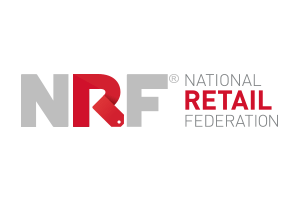 Executives from Macy’s, Lowe’s and The Limited said the impact of mobile on omnichannel engagement with customers has been huge and has progressed faster than expected, attendees were told at a session at the NRF Big Show this week in New York.
Executives from Macy’s, Lowe’s and The Limited said the impact of mobile on omnichannel engagement with customers has been huge and has progressed faster than expected, attendees were told at a session at the NRF Big Show this week in New York.
There’s been an evolution of customers wanting speed and convenience through mobile devices, said R. B. Harrison, chief omnichannel officer at Macy’s.
“We continue to be surprised at the pace of (mobile) adoption,” Harrison said. “Mobile is clearly a driving force in terms of what the industry is, and how we blend it into the in store experience.”
Brent Kirby, chief omnichannel officer at Lowe’s, said the company is leveraging major investments in associate mobile devices, apps and data to create a connected experience for customers.
“We see a lot of consumers using mobile to look for product and project knowledge, including thousands of how to videos,” Kirby said. “Consumers are bringing their own devices, looking up information while they’re in store. So we’re equipping associate with devices and apps to engage them and provide a greater level of detail. It requires a big investment, and we’ve seen good results. The migration to mobile is not slowing down, and it’s continuing to improve our cycle times. We’re keeping devices fresh in stores, listening to customer and employee feedback.”
Harrison said over the past couple of years mobile has become a major priority in terms of Macy’s digital development, shifting from the desktop, and the company will continue to invest heavily there.
“We’re trying to make it pervasive,” he said. “It’s not just about mobile web or apps, but about integrating it into the shopping experience. Customers can do things like identify where the specials are in store. It’s very visual.”
Harrison added that Macy’s ApplePay partnership “isn’t lighting up the registers, but it’s an evolving field we want to participate in because our customers are there.
In terms of consumer buying behavior this past season, executives said they’ve seen some interesting shifts.
“We’re seeing customers spread out their buying – it’s not just about Black Friday or Cyber Monday,” said Kirby. “It’s more balanced throughout the holiday season.”
“As much as we anticipate shifts in channel behavior, they continue to outpace expectations,” said Diane Ellis, CEO of The Limited. “We’re seeing more browsing behavior in November and more in-store activity in December. It becomes important as we plan inventory and promotions to understand how the shifts accelerate.”
In terms of omnichannel tactics, Ellis said a specialty apparel company like The Limited takes a different approach than a big-box retailer like Lowes or a department store like Macy’s.
“Most companies start out with something like ship from store, and everyone is trying to replicate the same path of growth,” she said. “We started from, what path to purchase is the most relevant for our client? For us, buy online and reserve in store lets the customer come in and try on products that are the most relevant. That has allowed us to take our resources and make sure we’re focusing on things that are meaningful for her, leveraging the best part of our store experience, our styling teams, taking items and extending them to a full outfit.”
Rather than “following the herd” of omnichannel tactics, Ellis said, “we don’t need to do all of them, just the ones that are most relevant to the experience she’s looking for.”
